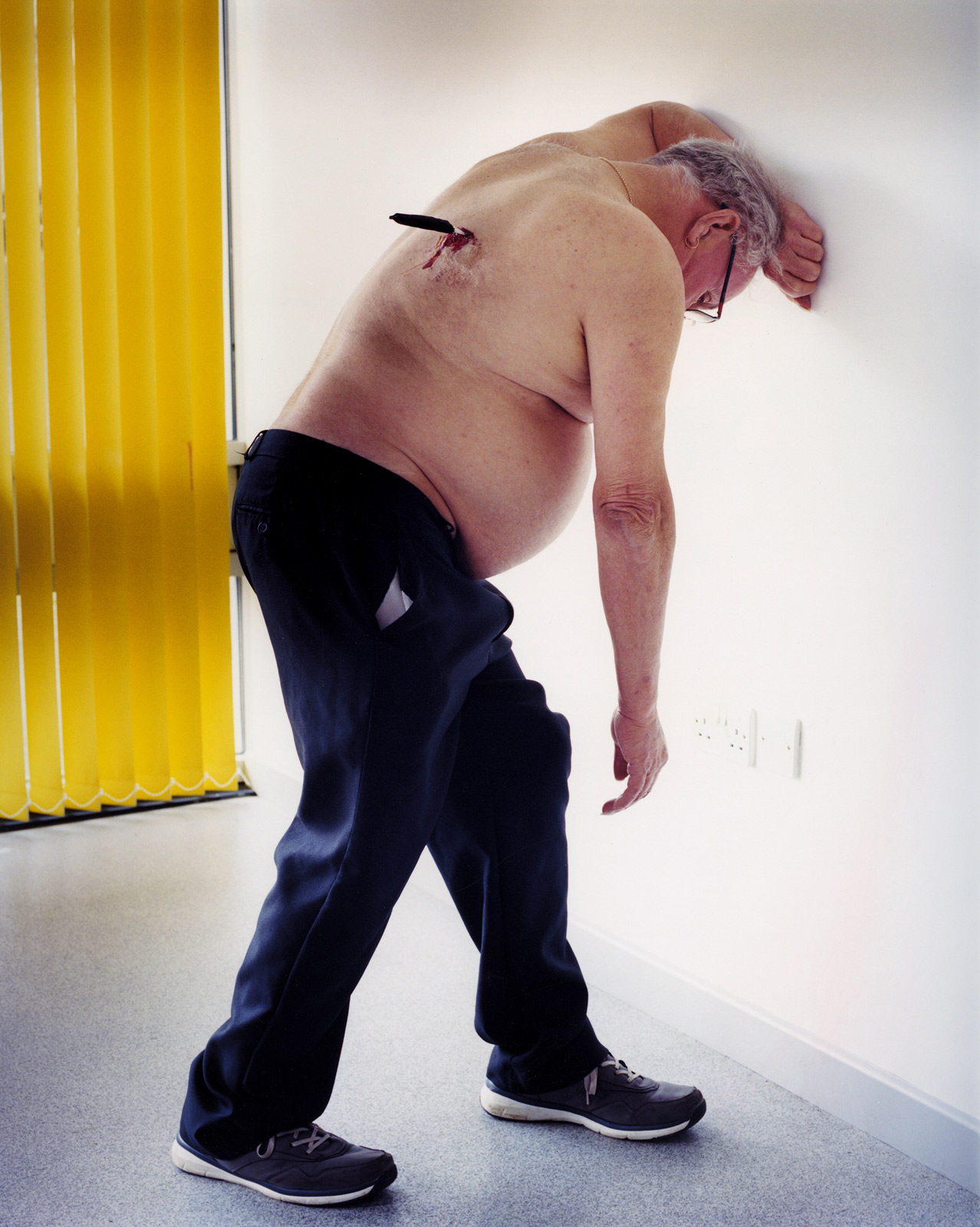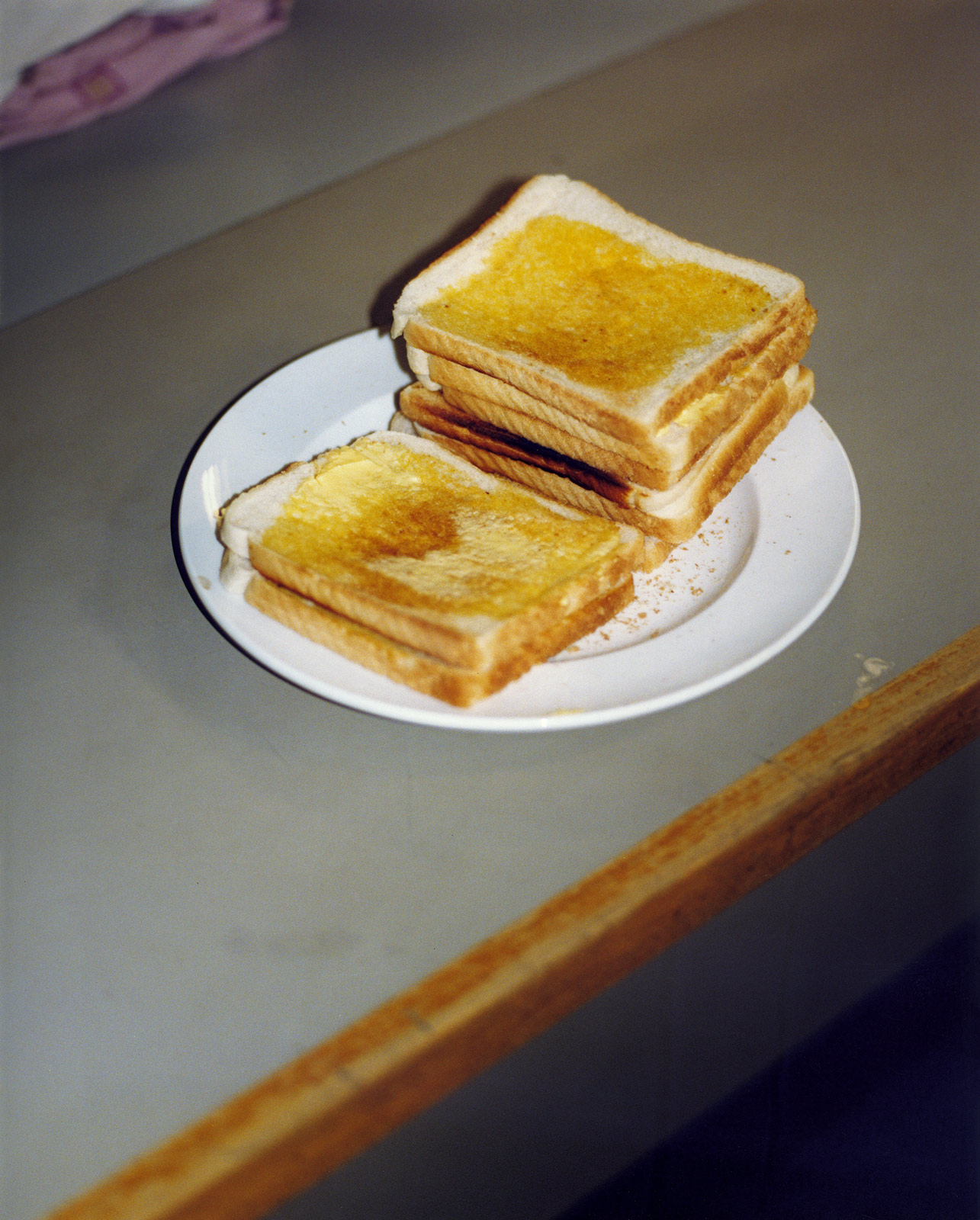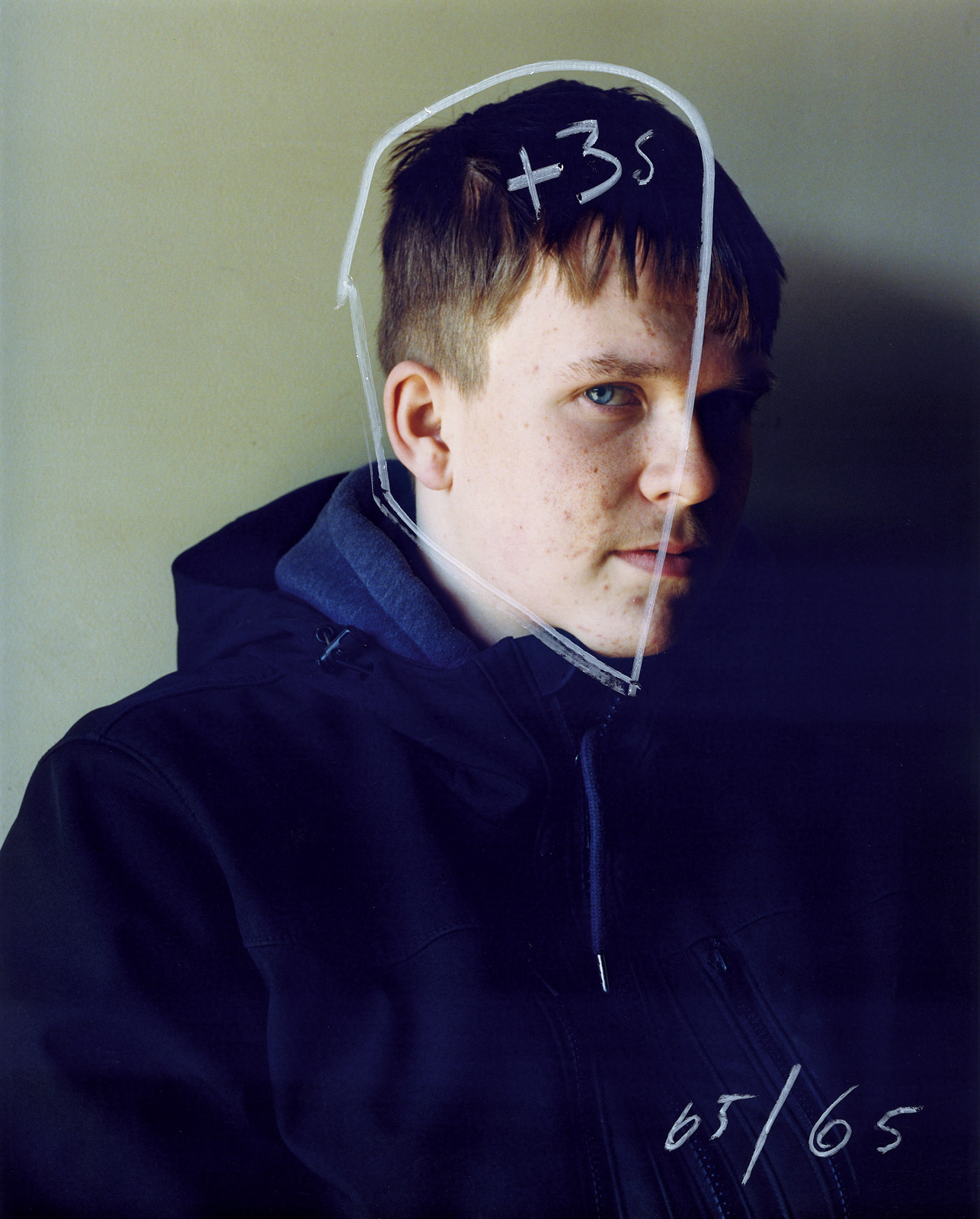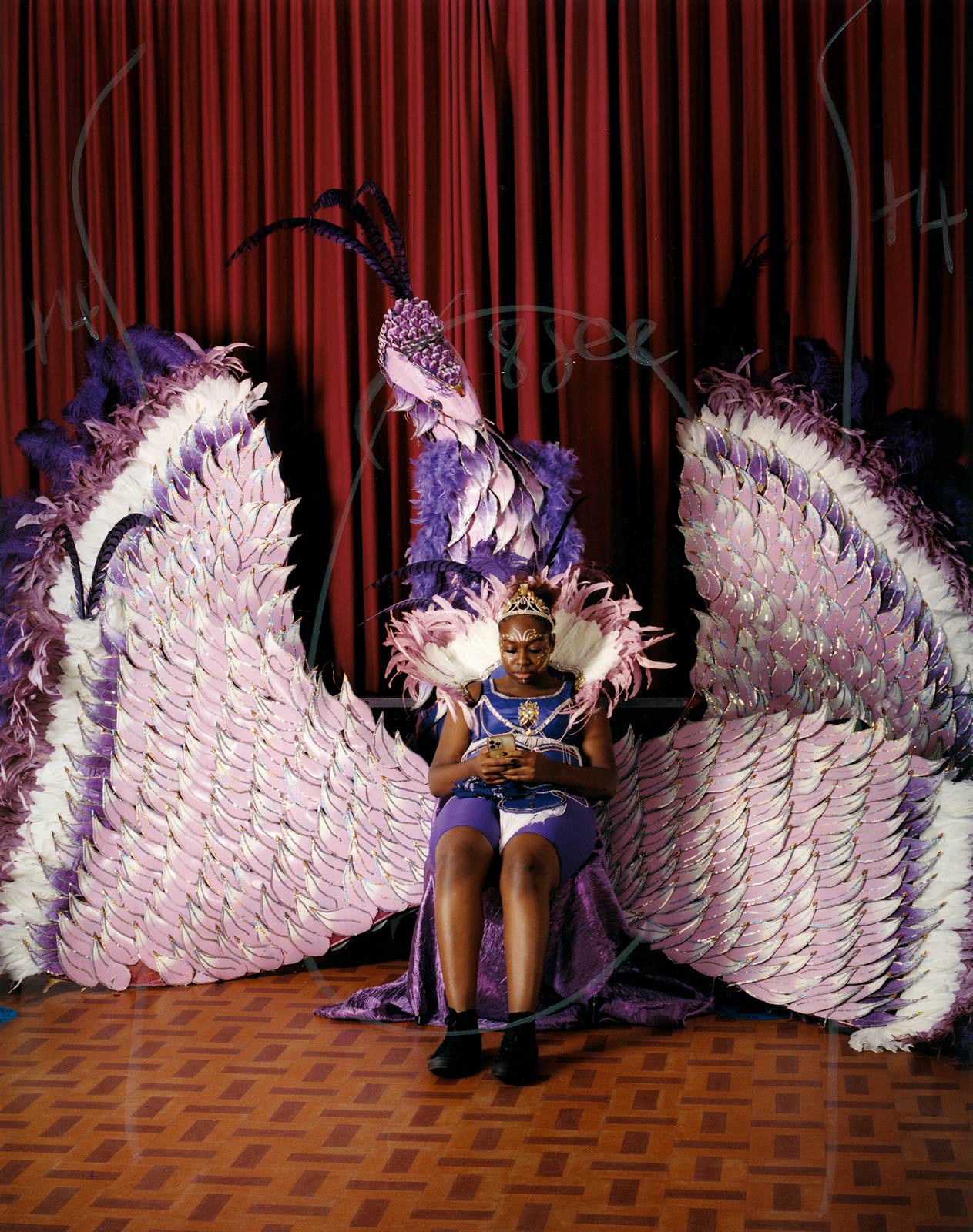Following the release of ‘A Perfect Sentence,’ the photographer joins Document to unpack the still-evolving philosophies of his practice
The gap between fantasy and reality often seems excruciatingly wide, but for Oliver Frank Chanarin, the two fold over one another. When so many different truths can exist simultaneously, concepts of what is real become less firm. The photographer’s newest book, A Perfect Sentence, is rooted in the idea that fact is forever in flux.
More than it forms a definitive sentence, the book really poses a question—and, as Chanarin explains, it’s far from a “perfect” one. Preoccupied with the ethics of documentary and how we define it, A Perfect Sentence is a physical manifestation of the artistic process. In lieu of displaying “final” images, which inherently imply authority, Chanarin displays snapshots of the evolution of a photo. Colored by his notes on light and color—where they should be changed to fit his vision of truth—his pictures invite you into his own uncertainties and anxieties around image-making.
Chanarin’s subjects—to whom he feels both indebted to and, at times, at odds with—embody the eccentricity of Britain: suburban fetish clubs, bread doused in butter, ambulance-chasing accident-fakers. The photographer is drawn to the margins, contending with how to capture them as a piece of the country’s history and evolution, without sacrificing their voices or his own.
Following the release of A Perfect Sentence via Loose Joints, Chanarin joins Document to unpack the still-evolving philosophies of his practice, and contextualize the making of the book.
Megan Hullander: Where does the book’s title derive from?
Oliver Frank Chanarin: I was listening to an interview with the writer and poet Hanif Abdurraqib about the struggle to craft a perfect sentence. It struck me that making photographs was similarly frustrating. Joan Didion once commented that we tell ourselves stories in order to live, and I see that in the way my children inhale fiction—where their lived experience and the make-believe become interchangeable. Somewhere along the way, as adults, we forget that. Likewise, the narratives that accompany photographs are always slippery: Fact, fiction, and fantasy become interchangeable.
In making portraits, there is always this awkward transactional moment when the subject agrees to be photographed, and the photographer attempts to articulate how their image will be used—how it will be exhibited, published, or shared online. Inevitably, there is a risk that the subject will feel disappointed in how that plays out—or worse, that they [will] feel misled. That is never ideal, but a lot happens after the photograph is made. I take the negative into the darkroom and start working with color and exposure. The print is never presented on its own, but as part of a sequence of other prints that unfolds according to my own syntax. The photographs, as a body of work, only really start making sense towards the end of this process, and the result feels more like a short story than a document of [a particular moment].
The title privileges written language and recalls something more literary and subjective. The word ‘perfect’ is aspirational, though, because nothing is perfect in this complex interaction between me and the remarkable people I met and photographed for this book. They are shaped by many spoken and unspoken exchanges. I’ve tried to make these encounters positive and inspiring experiences, but every human interaction is fraught, especially when a camera is involved.
Megan: What do you think is the function of auto-fiction in a photograph? How does it serve a story or idea in a way that other approaches might not?
Oliver: I love the way words and images intersect in the work of the German writer W. G. Sebald, and so as a kind of pilgrimage I visited the University of East Anglia before I started shooting, where Sebald was a professor of European literature. Many of his books are structured around his country walks in the sometimes bleak flat wetlands of the area around Norwich—and he inserts photographs into the text alongside other images, reproduced from the art history archives at the university. The words become images and vice versa. In A Perfect Sentence, I wanted to avoid the editorial mode of picture and caption, which I know can be frustrating. But the emphasis is less on each individual picture, and rather on the whole sequence and experience of the book. Ultimately, my photographs fail to live up to the experience of making them, and the text serves to provide that context.
“Making visible the process of making—the test strips and color adjustments—exposed the print as something very subjective, rather than a piece of forensic evidence.”
Megan: How many of the ‘meanderings’ that comprise the context for the making of these images came about by accident?
Oliver: When I started out as a photographer 25 years ago, I was working in this purely documentary mode, traveling away from home and having encounters with the world through my camera. I was working in collaboration with Adam Broomberg; after the publication of Ghetto and our book about South Africa post-apartheid, we both became suspicious of this mode of working. And after the dissolution of our partnership, I felt really unsure about how to make photographs again.
I decided to return to it and see how it felt, as an exercise, really, to re-learn some old methods of engagement. Honestly, it didn’t go too well. The world changed so radically in that time, and very quickly, the work shifted to accommodate that. [While] working on A Perfect Sentence, I was so much more aware of my impact as a stranger, walking into other people’s communities. Collaborating with museum partners and following safeguarding procedures presented some real difficulties; the daydream of meandering with a camera felt quite impossible. There are some photographs taken spontaneously along the way, but the vast majority were made through a carefully-choreographed series of engagements with communities—people’s places of work, charities, and informal social groups; casting through Instagram and Grindr; and reaching out through friends and underground networks. It’s another way of meandering.
Megan: Why is the exposure of process important to you?
Oliver: Printing analog color photography is difficult, and I’m not very good at it. It takes place in complete dark and demands a lot of patience—which I have very little of—and close attention to shades of color and exposure. I made a lot of bad prints. In particular, I really struggled with skin tones, and getting them to look natural. But I wanted to do it myself, because so much of the craft of photography has been usurped by off-the-shelf algorithms in the service of ‘perfect’ images. I wanted to make prints that didn’t feel like they were mass-produced. I struggled in the darkroom for a long time. Eventually, I started to appreciate my bad prints—the ones that were on the way to being good, but not quite there; making visible the process of making—the test strips and color adjustments—exposed the print as something very subjective, rather than a piece of forensic evidence.
Megan: Was there any sense of narrative you were working toward when constructing the book’s ordering and layouts? Or was there a different driving force in those compositions?
Oliver: The book and the exhibition deal with sequencing in very different ways. For the exhibition, I am working with a team of robotics engineers to create a machine that automatically hangs and rehangs the pictures for the life of the show. I made a prototype of this machine for a show at SF MoMA, and the slightly terrifying part is the way it is able to monitor the attention of viewers in the gallery and adapt the display sequence accordingly.
I worked closely with Sarah and Lewis at Loose Joints for the book to make something much more authored. They have a beautiful studio in Marseilles and we laid out all the prints on their studio floor and came up with something purely intuitive; where images from one scenario juxtapose and intersect with images from elsewhere. I’ve intentionally stripped the images of geographical location to enhance this sense that everything is somehow happening in the same place and time. It’s a partial and subjective view.
Megan: How does image-making help you process the ideas that you are contending with? Were there any instances in which the reconciliations you were confronting felt somewhat resolved, or become more complicated?
Oliver: At the start of the project, I had a really difficult encounter when someone that I photographed in a workshop context objected, because I had shared a snap of them on Instagram. I deleted the post immediately, but my mistake had a big impact, which was pivotal in how the rest of the project unfolded. One institutional partner canceled the exhibition and acquisition as a result, and we lost a lot of funding, which was devastating. But when I looked more closely at the safeguarding policies of the museums and institutions I was collaborating with, I could see how I had transgressed—albeit in a small way—and it inspired a kind of manifesto that guided the production of the rest of the photographs. I’ve translated the legal language of these policies into the first person, and they appear as a prologue in the publication:
Don’t reduce me to tears as a form of control.
Don’t allow my allegations to go unrecorded.
Don’t assert your authority through sarcasm.
Don’t take me in a car on a journey alone.
Don’t capture my image without consent.
Don’t do things for me that I can do for myself.
Don’t walk with your hands in your pocket.
Don’t contact me.
A Perfect Sentence by Oliver Frank Chanarin is published by Loose Joints.

































